
Lunar Prospector was the third mission selected by NASA for full development and construction as part of the Discovery Program. At a cost of $62.8 million, the 19-month mission was designed for a low polar orbit investigation of the Moon, including mapping of surface composition including polar ice deposits, measurements of magnetic and gravity fields, and study of lunar outgassing events. The mission ended July 31, 1999, when the orbiter was deliberately crashed into a crater near the lunar south pole, after the presence of water ice was successfully detected.

Colonization of the Moon is a concept employed by some proposals of establishing permanent human settlement or robotic presence on the Moon, the closest astronomical body to Earth, and the earth's only natural satellite.
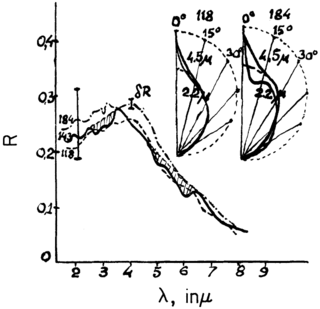
Lunar water is water that is present on the Moon. Diffuse water molecules can persist at the Moon's sunlit surface, as discovered by NASA's SOFIA observatory in 2020. Gradually water vapor is decomposed by sunlight, leaving hydrogen and oxygen lost to outer space. Scientists have found water ice in the cold, permanently shadowed craters at the Moon's poles. Water molecules are also in the extremely thin lunar atmosphere.

Energetic neutral atom (ENA) imaging, often described as "seeing with atoms", is a technology used to create global images of otherwise invisible phenomena in the magnetospheres of planets and throughout the heliosphere, even to its outer boundary. This constitutes the far-flung edge of the solar system.
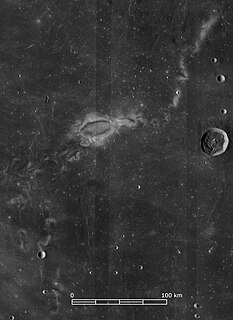
Lunar swirls are enigmatic features found across the Moon's surface, which are characterized by having a high albedo, appearing optically immature, and (often) having a sinuous shape. Their curvilinear shape is often accentuated by low albedo regions that wind between the bright swirls. They appear to overlay the lunar surface, superposed on top of craters and ejecta deposits, but impart no observable topography. Swirls have been identified on the lunar maria and highlands - they are not associated with a specific lithologic composition. Swirls on the maria are characterized by strong albedo contrasts and complex, sinuous morphology, whereas those on highland terrain appear less prominent and exhibit simpler shapes, such as single loops or diffuse bright spots.
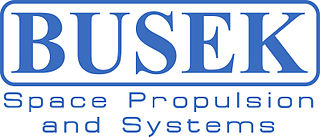
Busek Co. Inc. is a spacecraft propulsion company providing thrusters, electronics, and complete systems for spacecraft.

Artemis 1 is a planned uncrewed test flight for NASA's Artemis program that is the first integrated flight of the agency's Orion MPCV and Space Launch System heavy-lift rocket. It is expected to launch in November 2021.
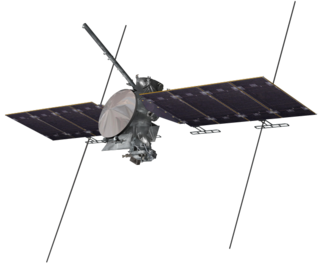
Europa Clipper is an interplanetary mission in development by NASA comprising an orbiter. Set for a launch in 2024, the spacecraft is being developed to study the Galilean moon Europa through a series of flybys while in orbit around Jupiter.
ExoCube (CP-10) is a space weather satellite developed by the California Polytechnic State University – San Luis Obispo and sponsored by the National Science Foundation. It is one of many miniaturized satellites that adhere to the CubeSat standard. ExoCube's primary mission is to measure the density of hydrogen, oxygen, helium, and nitrogen in the Earth's exosphere. It is characterizing [O], [H], [He], [N2], [O+], [H+], [He+], [NO+], as well as the total ion density above ground stations, incoherent scatter radar (ISR) stations, and periodically throughout the entire orbit. It was launched aboard a Delta II rocket with the NASA SMAP primary payload from Vandenberg AFB in California on January 31, 2015.

Phobos And Deimos & Mars Environment (PADME) is a low-cost NASA Mars orbiter mission concept that would address longstanding unknowns about Mars' two moons Phobos and Deimos and their environment.

The Lunar Flashlight is a planned low-cost CubeSat lunar orbiter mission to explore, locate, and estimate size and composition of water ice deposits on the Moon for future exploitation by robots or humans.

Lunar IceCube is a planned NASA nanosatellite orbiter mission to prospect, locate, and estimate amount and composition of water ice deposits on the Moon for future exploitation by robots or humans. It will fly as a secondary payload mission on Artemis 1, the first flight of the Space Launch System, planned to launch in 2021.
CubeSat for Solar Particles (CuSP) is a planned nanosatellite spacecraft that will study the dynamic particles and magnetic fields that stream from the Sun.
ArgoMoon is a nanosatellite that will fly on NASA's Artemis 1 mission into a heliocentric orbit in cislunar space on the maiden flight of the Space Launch System and the Orion spacecraft, in 2021. The satellite has the dimensions of a shoe box in CubeSat terms, it is a 6U.
Team Miles is a type of nanosatellite called 6-Unit CubeSat that will demonstrate navigation in deep space using innovative plasma thrusters. It will also test a software-defined radio operating in the S band for communications from about 4 million kilometers from Earth.
EQUULEUS is a nanosatellite of the 6-Unit CubeSat format that will measure the distribution of plasma that surrounds the Earth (plasmasphere) to help scientists understand the radiation environment in that region. It will also demonstrate low-thrust trajectory control techniques, such as multiple lunar flybys, within the Earth-Moon region using water steam as propellant. The spacecraft was designed and developed jointly by the Japan Aerospace Exploration Agency (JAXA) and the University of Tokyo.
OMOTENASHI is a small spacecraft and semi-hard lander of the 6U CubeSat format that will demonstrate low-cost technology to land and explore the lunar surface. The CubeSat will also take measurements of the radiation environment near the Moon as well as on the lunar surface. Omotenashi is a Japanese word for "welcome" or "hospitality".

Commercial Lunar Payload Services (CLPS) is a NASA program to contract transportation services able to send small robotic landers and rovers to the Moon's south polar region mostly with the goals of scouting for lunar resources, testing in situ resource utilization (ISRU) concepts, and performing lunar science to support the Artemis lunar program. CLPS is intended to buy end-to-end payload services between Earth and the lunar surface using fixed priced contracts.
CubeSat UV Experiment (CUVE) is a space mission concept to study the atmospheric processes of the planet Venus with a small satellite. Specifically, the orbiter mission would study an enigmatic ultraviolet light absorber of unknown composition situated within the planet's uppermost cloud layer that absorbs about half the solar radiation downwelling in the planet's atmosphere.
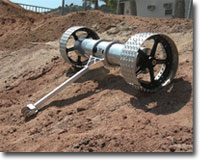
Moon Diver is a proposed lunar mission concept by NASA's Jet Propulsion Laboratory that would employ a robotic lander and a two-wheeled rover called Axel to investigate the exposed geological layers on the walls of a deep lunar pit.















